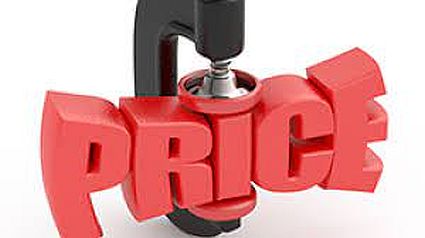My post, Games Sellers Play, Pricing/Discounting, generated a lot of interesting conversation and questions. One pervasive question was, “How do I compete against competitors whose price is less than ours?”
Some of the discussions asked about matching prices or coming up with standard discounting, or how to find other ways to match or beat the competitors pricing. We could even extend the argument to, “our competitors have more features and functions than us, how do we compete against that?”
Unless your company strategy is always to be the low price supplier (it’s hard to build a high growth/high profit business that way), you will always have competitors that are priced lower than you. You will always have competitors with differing features and functions than your products.
But focusing on beating the competitor, whether on pricing or features and functions, is a losing strategy It actually draws your customers’ attentions to those competitors.
The discussions most relevant to our customers are focused on them–they are conversations focused around value–the value we create with the customer, in their buying process and through the life of our relationship with the customer. The value delivered and realized in implementing our solutions and achieving their goals.
That is what is most important, that is what the customers must focus on in their buying process. It’s this value that is most important to our customers. And this value outstrips our price and pricing differences with our competition.
But too often we fail. We compete against our competition, rather than competing on value. We make the customer focus their decision on product features/functions and pricing; as a result forcing all these discussions into a pricing death spiral, from which there are actually few winners.
In our engagement strategies, our focus should be less on our competitors, and more on helping the customer, themselves, focus on value. We have to become invaluable to them in helping them understand and commit to the need to change. We have to be relentless in understanding the business issues the customer faces and is trying to address; AND making sure they understand those issues. We have to help them ask the right questions, discover what they don’t know, learn what others have done, identify risks, develop strategies to manage the risk, identify who should be involved in the decision, how they get organizational support, how they get executive support, how they successfully navigate their process making a decision in which they have confidence.
Since they seldom embark on this process, they don’t know how to and we create great value in helping them successfully navigate this process.
Then when they make the decision, selecting us, we have to help the customer deliver on their commitments–not just the value realized from our solution, but the value they realize in the total change process. Our solutions are a small component of the total value realized, but the customer may not realize this without our continued support and leadership.
And we don’t stop there, we help them continue to grow, learn and improve, achieving even more.
Some of you might be reacting, “Well, our competition says ‘Me too! We can deliver the same improvements and capabilities us you, the customer will see the same or better value from our solutions! And we have more bells/whistles, and we are cheaper!’ “
But your competition is not delivering the value that you are creating in helping the customer navigate the decision. You must be providing that up front leadership and partnership. You mus be helping the customer understand, learn, make sense of what they are experiencing, develop their confidence and succeed in their change/buying process. Your competitors are not doing this and this is what’s most important to the customer. Over 60% of them fail because they do not know how to do this, or because they become paralyzed with FOMU. And for those who do succeed, a high percentage have remorse.
We create immense value in helping the customer succeed both in their buying process and then in implementation. And competing on this basis, focusing on helping the customer succeeds will make any pricing differential irrelevant to the customer. In fact many constantly command higher pricing because of their expertise in doing this.
Any solution the customer is considering and has short listed, will solve their problem. Features/functions battles are distractions sellers create because they don’t know how to create value, helping the customer with the issues most important to them. When we allow ourselves to be distracted, when we let the customer be distracted no one wins!
But…..
There will be some customers, regardless of what you do, regardless of how you help them, that will revert to price, buying the lowest price offering. They will threaten and plead with you to discount. And if you succumb to this, you have negated everything you have to to help the customer make a decision in which they have confidence. You have devalued all the leadership you provided.
If you have truly created value with your customer and been a partner through their process, it is highly unlikely they will say, “Your competition is cheaper.” They will recognize what you have done and will want you to be their partner in the ongoing process. To them the price differential is meaningless, when compared to your help and support.
But sometimes they will ask, possibly for shits and giggles. Stand firm, be confident in what you have done and remind them of how you have and will continue to help them achieve their goals.
And then, despite all of this, there will be those few customers that will say, “But your competition is cheaper, you need to come in at a lower price…..” Walk away! Good riddance! They don’t value what you have done, they never will value what you do. Make them your competitors “customers from hell!”

Leave a Reply